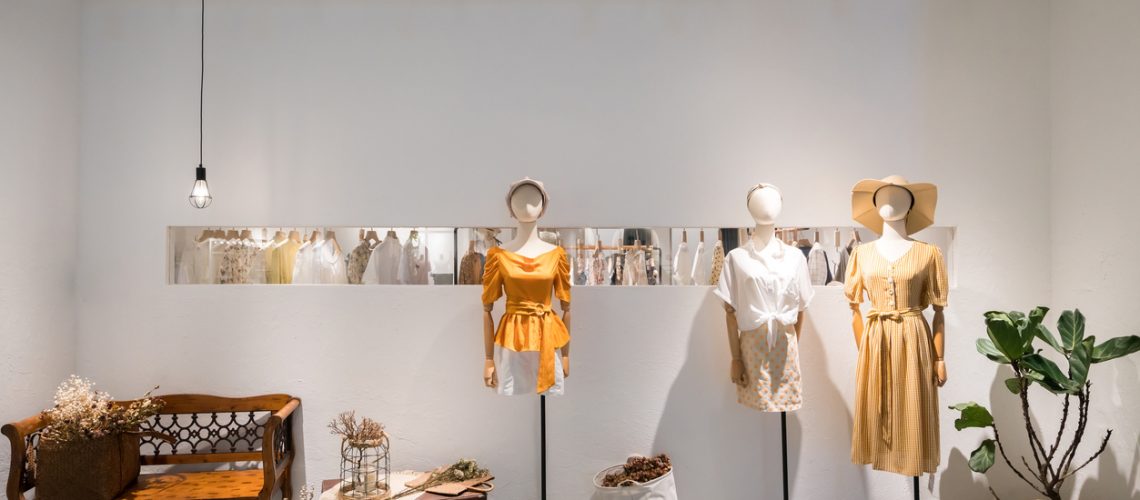How to Style Your Clothing with Boutique Fashion Finds
How to Style Your Clothing with Boutique Fashion Finds
Blog Article
A Deep Study the Globe of High-Fashion Runways: Understanding Clothes as Art
Designers, much like skillful musicians, weave complex stories with color, textile, and form, testing traditional standards and redefining charm standards. As we explore these sartorial eyeglasses, we must contemplate: what role does style play in shaping social worths, and exactly how does it show the ever-changing tapestry of human feeling and identification?
The Evolution of Runway Reveals
The trajectory of runway shows has changed substantially over the years, advancing from exclusive market events to exciting eyeglasses that mix style with art. Typically, runway shows made love affairs, kept in ateliers or small locations, mostly participated in by customers and sector experts. These early discussions focused on the garments' craftsmanship and commercial stability, offering a functional and direct display of seasonal collections.
As the fashion business broadened, the nature of path shows began to alter. The 1970s and 1980s marked a transforming point, with developers looking for to distinguish themselves with even more theatrical discussions. This era saw the increase of sophisticated sets, choreographed designs, and thematic stories, heralding a brand-new age where the path came to be an experiential platform. The programs changed right into a type of storytelling, where each collection conveyed an unique story or concept.
In the last few years, innovation and social networks have even more transformed runway shows, making them obtainable to an international audience. Livestreaming and digital systems have equalized fashion, enabling enthusiasts worldwide to witness these occasions in real-time (boutique fashion). This advancement reflects a broader cultural shift, where high-fashion paths work as a vibrant crossway of performance, technology, and style
Designers as Visionary Artists
Developers in the high-fashion sector have actually blurred the lines between practical garment creation and the conceptual realm of art. By welcoming creative techniques such as sculpture, paint, and progressive installments, designers craft garments that test conventional style standards and elevate them to art forms.
Visionary designers draw ideas from a myriad of resources, consisting of abstract art, historical recommendations, and individual narratives. They possess a special ability to visualize and materialize ideas that push the limits of conventional style, frequently redefining aesthetic paradigms at the same time. This creative ingenuity is showcased through dramatic shapes, cutting-edge products, and complex craftsmanship, which invite viewers to experience fashion as greater than simply wearable items.
Moreover, the runway serves as a canvas for these musicians, where illumination, music, and established design coalesce to create immersive experiences. These discussions are not just screens of clothes but are orchestrated efficiencies that evoke feeling and provoke idea, verifying the designer's function as a real musician in the modern cultural landscape.
Social Influences in vogue
Social tapestry weaves its detailed patterns right into the fabric of fashion, influencing designers worldwide. The dynamic interchange of cultural stories, customs, and icons educates and motivates collections that poise high-fashion paths. Designers diligently draw from their heritage or engage with cultures distinct from their own, crafting garments that act as visual stories. This cultural discussion not just enhances the visual variety but additionally fosters a deeper understanding and admiration of worldwide identifications.
The influence of society on style is frequently seen in the reinterpretation of Website traditional garments and patterns. The usage of Japanese bathrobes, Indian saris, or African prints in modern style shows a blend of cultural credibility and modern-day visual appeals. Designers such as Valentino's Pierpaolo Piccioli and Alexander McQueen's Sarah Burton have actually been recognized to integrate rich cultural themes into their couture collections, equating history into wearable art.

Innovation in Textile and Design
Development in fabric and style continually reshapes the landscape of high-fashion, pressing borders and redefining possibilities. In recent times, technical advancements have actually substantially contributed to this development, introducing materials that test conventional understandings. Textiles embedded with clever fibers, qualified of changing color or managing temperature level, are no much longer restricted to the realm of sci-fi. Developers are significantly checking out the integration of innovation, such as 3D printing, which enables for the creation of complicated structures that were formerly unthinkable.
The fashion industry is seeing a rise in the use of eco-friendly materials, acquired from recycled plastics, organic fibers, and also biodegradable components. Designers are welcoming these materials to craft garments that are both conscious and visually striking of their eco-friendly impact.
In terms of style, avant-garde silhouettes and experimental forms are constantly revolutionizing the runway. By incorporating cutting-edge techniques and non-traditional materials, designers cultivate garments that blur the line in between style and art, setting brand-new standards for imagination and expression in the high-fashion sphere.
Impact of Fashion on Society
Style wields an extensive influence on culture, serving as both a representation of social identification and a stimulant for social change (boutique fashion). Through its evolution, style has mirrored social shifts, enveloping the zeitgeist of different ages.
In addition, style has the power to bridge click for more cultural gaps, fostering understanding and gratitude among diverse teams. As globalisation increases, the cross-cultural exchange of fashion concepts ends up being increasingly considerable, promoting inclusivity and variety. The increase of streetwear, stemming from city subcultures, shows exactly how fashion can go beyond socio-economic limits, providing individuals a way of self-expression and empowerment.
Essentially, style is not just concerning visual appeals; it is a dynamic force that influences values, attitudes, and social progression (boutique fashion). By constantly communicating with social and social currents, fashion continues to be an important component of the cumulative human experience

Final Thought
High-fashion paths act as vibrant fields where garments goes beyond functionality to end up being an expressive art kind. Designers, similar to visionary musicians, coordinate collections that reflect identity, emotion, and cultural stories, challenging typical visual appeals. The fusion of innovative textile and style, paired with fancy set styles, illumination, and music, produces immersive experiences that celebrate multiculturalism. This intersection of fashion and virtuosity not only mesmerizes target markets around the world yet also influences social understandings and advertises a deeper admiration for multiculturalism.

Cultural tapestry weaves its elaborate patterns right into the material of style, influencing developers internationally.Fashion possesses an extensive influence on society, serving as both a reflection of cultural identity and a stimulant for social change.
Report this page